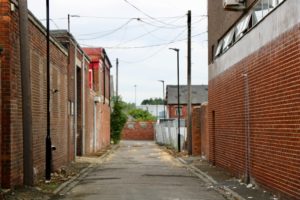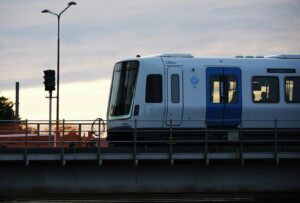A new fund will help to build thousands of new homes on underused and derelict land, regenerating local areas and helping to address housing shortages.
Almost £58m from the £75m Brownfield Land Release Fund (BLRF) has been allocated to 53 councils.
5,600 homes are expected to be built on these brownfield sites, with the demolition of derelict buildings and disused car parks and garages making way for new properties.
The government also predicts the funding could support up to 17,000 jobs across the housing and construction sector.
The funding allocation includes £5m for self and custom-built projects, with a further £20m from the BLRF designated to help accelerate the self and custom build sector.

Secretary of state for levelling up, Michael Gove MP, said: ‘We are levelling up and backing home ownership in every corner of the country, delivering new high-quality, affordable homes and creating thriving places where people want to live, work and visit. Making the most of previously developed land is a government priority and it will help protect our cherished countryside and green spaces.’
Responding to the announcement, Cllr James Jamieson, Local Government Association Chairman, said: ‘One Public Estate and Brownfield Land Release funding play a crucial role in supporting the recovery from the COVID-19 crisis, and supporting councils to transform their assets, create better services, and release land for much-needed new homes and regeneration across the country.
‘This latest news is more proof that this programme works. Councils recognise how valuable this support is and are being ever more ambitious in their ideas to use this funding to kick-start transformation, regeneration, and new development in their communities.’
However, Lawrence Turner, associate director of Boyer planning consultancy, expressed scepticism about the effectiveness of the funding in addressing the housing shortage: ‘While the new allocation announced today is good news for under-utilised urban sites, it only goes a small way to delivering the 300,000 homes required each year. Brownfield land is notoriously difficult to develop. By its nature, brownfield land is often contaminated, requiring expensive remediation works, which restricts scheme viability. While brownfield sites will be developed as a result of this announcement, those of less certain success will be stalled by changes in the housing market, build costs and in Government policy – such as changes in relation to phosphates which is an unresolved and very immediate concern that particularly affects brownfield sites.
‘With marginal viability, fewer affordable homes will be delivered, which will compound affordability issues in some areas. Furthermore, brownfield land typically delivers smaller 1 and 2-bedroom properties, such as apartments, rather than the family homes which are in shortest supply.
‘While we support measures to encourage self-build homes, we also have reservations on an over-reliance on self-build, which will not deliver significant numbers and is likely to require Government interventions such as a relaxation of CIL and other tax incentives. So, while we welcome this announcement, as a necessary piece in the jigsaw that is the housing crisis, it is in reality only a very small piece. An increase in the number and speed of delivery of new settlements will complete the jigsaw.’
In related news, some of Scotland’s most long-standing derelict sites will be transformed by the first awards from the new Vacant and Derelict Land Investment Programme.
Photo by Ethan Wilkinson

















Leave a Reply